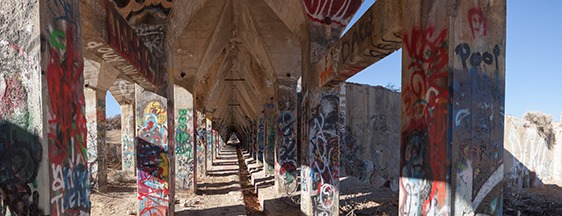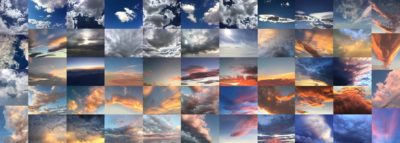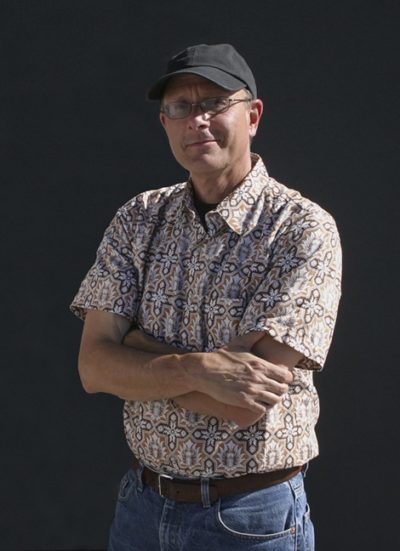This blog is part of the Environmental Impact II series produced by David Wagner.
To be, or not to be, that is the question. Whether tis nobler in the mind to suffer the slings and arrows of outrageous fortune, or to take arms against a sea of troubles, and by opposing, end them. To die—to sleep, no more, and by a sleep to say we end the heartache and the thousand natural shocks that climate change provokes; tis a consummation inevitably upon us.
Of course, I am paraphrasing Prince Hamlet’s soliloquy, acknowledging that to be or not to be is one of the most quoted lines from William Shakespeare’s Hamlet, published in a quarto edition in 1603. And, yes, the italics and subsequent wording are my additions, but those words that precede my unauthorized substitutions only emphasize the peril of our dilemma.
No one need tell us that climate change is upon us, for the winds and swells of scientific proof are nothing less than daunting and to the educated, ipso facto. Yes, climate science denialists populate decision making processes in all the world’s governments. And, yes, too, for quite a long time, the world, our own oblate spheroid, was thought flat, such that even today we can say without irony that we know this to be true from the four corners of the Earth. From a Eurocentric perspective, Ferdinand Magellan organized the Spanish expedition to the East Indies that resulted in the chronicled account of the first circumnavigation of the Earth, completed in 1522 by the sailing crew captained by Juan Sebastián Elcano. Magellan did not survive the journey, and what was written describes a harrowing tale, animated in objects, texts, maps, and ocean waves lapping at visitors’ periphery in the galleries of the Archivo General de Indias in Seville, Spain. Seville was, for those curious to know, the city from which Magellan’s journey originated. His fleet of five ships descended the Guadalquivir River, reaching Sanlúcar de Barrameda, where the perilous ocean voyage began.
Yet, today, after five centuries, emboldened yahoos, such as members of the Flat Earth Society, argue on cyber soapboxes that a ‘round Earth conspiracy” has been orchestrated by NASA and other government agencies. What is known has become a variant of the politicized fake news, repeated by climate science denialists. To prove that facts do indeed exist, must they travel into space and see with their own eyes the beautiful jewel in our galaxy, the undeniable shape, itself, to fully believe it? Must their homes be swept out to sea, or given continental warming, will palm trees survive in Antarctica? Such questions are indeed a form of folly that in their asking reflects a deep-seated ignorance. Our education systems have failed, and teachers are treated as political opponents. Such ignorance startles the cognoscenti, but hope is not entirely lost.
Hope is nurtured as the lone coyote howls in the crisp night air, wondering if a mate might be in the distant somewhere. The coyote’s eyes see only darkness, but the high-pitched lyrics replete with barks, yips, and huffs continue well into the night, a soliloquy upon landscape. This is a post climate-change world. The coming apocalypse may be an evangelist’s discourse, a narrative confusing religion’s fanciful tales with predictive realities, but clearly the literati acknowledge that the future of us is a lot different than that of the planet. We may be our own undoing, as the long-archived comic strip Pogo (1913-1973) acknowledged in two-panel harmony on Earth Day in 1971, that we have met the enemy, and he is us. Human and hubris alliterate the similarity of the challenge, for change is not only upon us, but awash over us. Why is this still news? Because, I dare say, too many do not believe it, and because there are those who derive benefit from denying. It makes me wonder; is denying just another opiate that obfuscates the responsibility to educate, inform, revise, recognize, and, yes, adapt? My friends and fellow artists wonder, why do we rebuild with flammable materials in fire-prone regions of the American West? Why, we admonish, do we continue to privatize profit and socialize risk, such that when hurricanes destroy shorezone mansions, the people through their taxes pay the price of exuberance? And for those less fortunate, when their homes are subsumed in rising tides, why were zoning rules and plot-line boundaries drawn without regard for rising seas, hurricanes and tornadoes, fire cataclysms and even the supply of potable water, itself a function more of defining a commodity than the most basic source of life, itself. Facts become perceived as fake, facilitating the comfort of denial, the selfishness of me, the myopia of misanthropes, the dystopian divergence of those that have from those that struggle to get by. Although Alice in Wonderland offers a tantalizing tidbit of hope, descending into the rabbit hole is a dream that is all too real. And when measuring metaphors, artists enter.
Unbeholden to a requisite philosophy of political ideology or a practicum of responsibility, artists are reminded that they are both court jesters and guardians of the aesthetic. They are by virtue of their non-essential roles let free to roam, and think what they may, and create what they might. All the while, they traffic in metaphors of one sort or another. In Environmental Impact II, the participating artists animate the middle ground between light and shadow and between science and superstition, where each artist in their own way seeks to control the horizontal, and revise the vertical. As for me, traveling on pathways of sight and sound, my eyes gaze at the wonder of a military that bombs its own landscape, or a forest fire that leaves palm tree missiles in its wake. A mining ruin by any other name is still a ruin, but American Flat was so named in order to reinforce a preferred ancestry, excluding others. A concrete milling structure of multiple buildings, built to harvest gold using the cyanide leaching process, left behind a legacy of contamination. Its mark on the rolling range country embracing Virginia City, Nevada is enduring, but it is today principally out of sight as all of the buildings were removed. The Bureau of Land Management knew that the site was an attractive nuisance, and litigious we are, in this rabbit hole, so removing outweighed a proposed interactive park, replete with historical narratives and alternative voices. The cyanide below poisons the rabbit hole.
Rest, ye weary souls, in the hot springs nestled in an alkali Smoke Creek Desert, and listen first to the silence, and then to the coyotes of the night. Soak, and warm your thoughts, as the world so far away rents space in your brain. Take a moment and close your eyes, and whatever you do, clean up the bullet casings, embers from your nearby fire, and the underwear left behind; or not. For the beauty of the place is for you to behold, as this journey is a self-focused pleasure ride and you most probably will never know who comes next. Trim the branches of the trees because it’s a canopy we seek, and paint them not to decorate but to resist the insects, for they will inherit the Earth that we abandon. Folly is, as folly does, and maybe it makes a difference, and for that, we hold deep within ourselves another kernel of hope. Hope is naïve, I’ve been told. Look to the skies above, remark at the clouds, lenticulars, cumulus, nimbus, and cirrus, knowing that the metaphors above are signs of what exists beyond us.
This essay is a ruminating story of photographing and bearing witness to a bombing range (central Nevada), a user-created hot springs on private property accessible by anyone passing by (Smoke Creek Desert, Nevada), a remnant burnt palm forest, trunk stalks remaining (Shipai Village, China), trees, pollarded (Cholula, Mexico), a mining site that no longer exists (American Flat, Nevada), and a kaleidoscope of clouds, through the house, darkly.
Information about the artwork:
Pollarded Trees, Plaza de la Concordia, Cholula, Mexico
Original file 2009; print, 2019
Hahnamuhle watercolor paper 350 gsm
image size 20” x 66.8” / paper with border size 24” x 70.8”
Sky Kaleidoscope
Original photographs made from approximately 2012 to 2018; print 2019
Hahnamuhle watercolor paper 350 gsm 24” x 60”
image size 20” x 55.83” / paper with border size 24” x 59.83”
Palm Forest, Shipai Village, China
Original files from multiple exposures, 2013, print 2019
Hahnamuhle watercolor paper 350 gsm
image size 20” x 88” / paper with border size 24” x 92”
Lower Gallery, American Flat, Nevada
First concrete milling structure for gold mine near Virginia City, Nevada.
Original files 2014; print, 2019
Hahnamuhle watercolor paper 350 gsm
image size 20” x 46.91” / paper with border size 24” x 50.91”
Target Bravo 17 Bombing Range, Nevada
Military bombing site, Nevada
Original file 2006; print, 2019
Hahnamuhle watercolor paper 350 gsm
Three images on one panel: paper with borders 24” x 79.817”
Hot Springs Pool, Smoke Creek Desert, Nevada
Popular hot springs pool damaged by alcohol and fire
Original files 2014; print, 2019
Hahnamuhle watercolor paper 350 gsm 24” x 77.5”
Peter Goin is a Foundation Professor of Art in photography/Time Based Media (videography) at the University of Nevada, Reno. He is the author of books exploring paradigms of the American landscape, including Tracing the Line: A Photographic Survey of the Mexican-American Border; Nuclear Landscapes; Stopping Time: A Rephotographic Survey of Lake Tahoe, Nevada Rock Art, and Humanature, to name a few.
Inevitably, manuscripts that focus on understanding, envisioning, and defining the perception of landscape involve dedicated coauthored projects, including the Atlas of the New West; A Doubtful River; Changing Mines in America; and with Paul F. Starrs, Black Rock, a dedicated investigation of the phenomenal desert and mountain region in northern Nevada; and, A Field Guide to California Agriculture. His book, Time and Time Again: History, Rephotography, and Preservation in the Chaco World was coauthored with Lucy Lippard.
Peter’s photographs have been exhibited in more than fifty museums nationally and internationally, and he is the recipient of two National Endowment for the Arts Fellowships. At the turn of the new century he was awarded Nevada Governor’s Millennium Award for Excellence in the Arts. Peter lives in Reno, Nevada.
The MAHB Blog is a venture of the Millennium Alliance for Humanity and the Biosphere. Questions should be directed to joan@mahbonline.org
The views and opinions expressed through the MAHB Website are those of the contributing authors and do not necessarily reflect an official position of the MAHB. The MAHB aims to share a range of perspectives and welcomes the discussions that they prompt.





